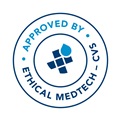
Douglas Denise
Utah Ear, Nose and Throat
USA
Title: Closure of select tympanic membrane perforations using an absorbable gelfilm disk technique
Biography
Biography: Douglas Denise
Abstract
Introduction: Tympanic membrane perforations are common conditions that may require surgical closure. The least invasive technique is favored to reduce cost and possible complications. Repair of select small defects may be accomplished using local anesthesia; larger defects often require general anesthesia, elevation of a tympanomeatal flap and entry into the middle ear space. A new technique is described for closure of favorable perforations using local anesthesia that does not require elevation of a tympanomeatal flap thus potentially reducing the risk of surgical complications and the cost of treatment. Design: Five patients with chronic tympanic membrane perforations were selected. The perforations were measured and two disks of Gelfilm sterile absorbable gelatin film (Pfizer) were moistened with saline and cut to a size that 3-5 mm larger than the defect and a 6.0 polydiaxanone suture was placed through one implant. Phenol was used to treat the perforation edge. The implant was inserted through the perforation and set into position on the medial side of the tympanic membrane by applying traction with the suture. The second Gelfilm disk was threaded on the suture and applied to the lateral tympanic membrane such that the perforation was closed. The suture was glued and trimmed. Results: Successful closure of each perforation using the Gelfilm sandwich technique was accomplished at 2, 4 and 10 weeks. Conclusions: Use of the Gelfilm sandwich technique maybe an option for closure of select tympanic membrane perforations that fail to heal spontaneously

